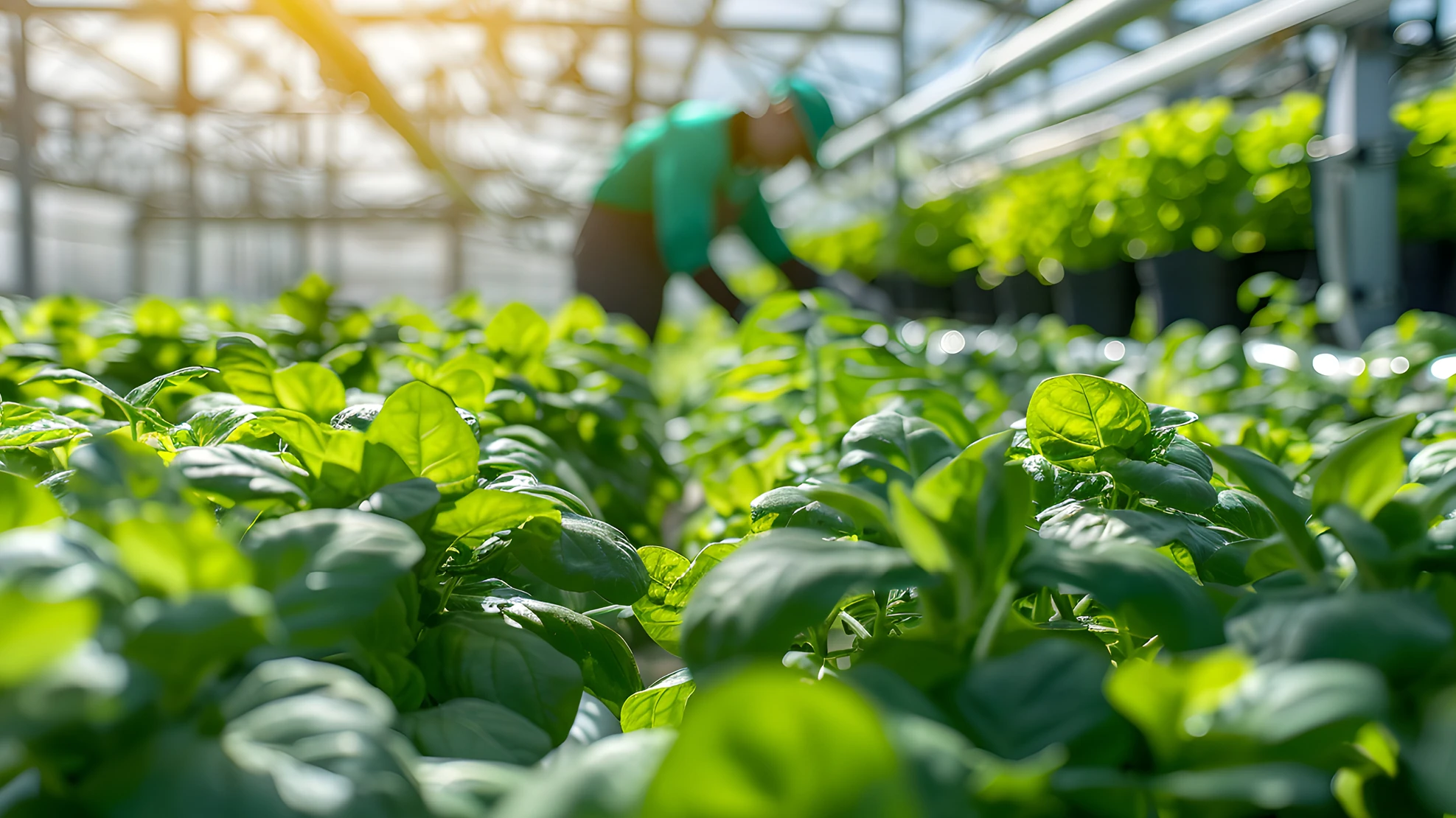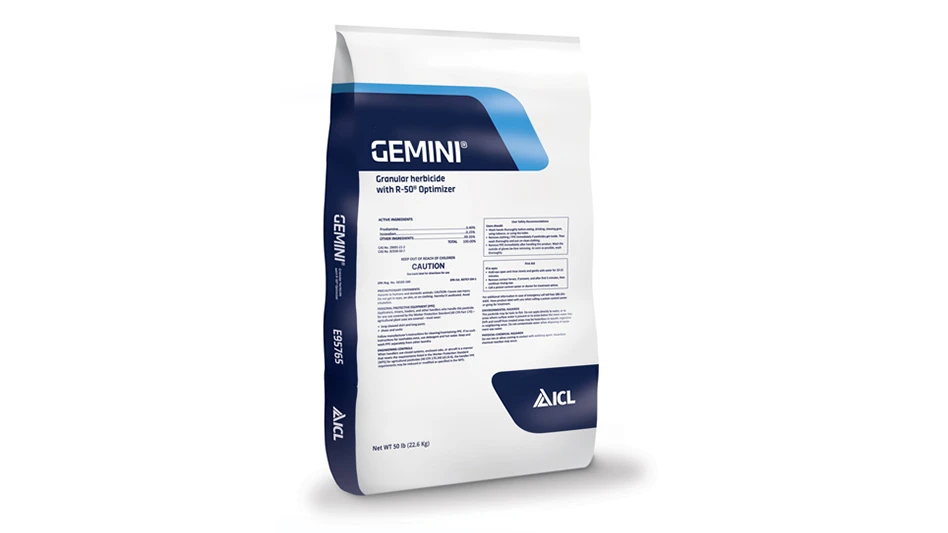  Jonathan, Georgia and Jerry Soukup like to keep things simple from their production facilities to how they work with their customers nationwide. Jonathan, Georgia and Jerry Soukup like to keep things simple from their production facilities to how they work with their customers nationwide. |
Jerry and Georgia Soukup, owners of Southwest Perennials Inc. in Dallas, Texas, like to keep things simple.
That applies to their propagation facilities as well as how they work with their customers throughout the United States. The Soukups operate two locations a few miles apart in which they produce 72- and 128-cell plugs of drought-tolerant natives, perennials and herbs. The two production locations total about 80,000 square feet of greenhouse space.
The larger facility, which has about 50,000 square feet of covered production, is owned by the City of Dallas. The Soukups have been leasing the facility since 1995 when they started the company with a small group of partners.
“The greenhouses were already here,” Jerry said. “The city used them primarily to grow plants for its park system and other city properties. Budget constraints caused the city to make some cutbacks, which included mothballing this facility.”
Prior to taking over the operation from the city, the greenhouses had been used for pot plant production. The structures were covered with glass and fiberglass.
“We made minor changes to the inside of the structures, some of which were equipped with rolling benches,” he said. “We replaced the fiberglass with poly film. We also installed some sprinklers and mist systems for propagation.
“When we started out with this facility we had to make what we had here work. Initially we tried to propagate in the glass houses, but we found out quickly we couldn’t maintain the kind of heat we needed during the winter months. The glass houses also have wide walkways and fixed benches.”
To resolve the heat and inefficient space problems, Soukup re-glazed one of the fiberglass-covered structures with poly film. He also converted shade-covered areas to poly-covered structures.
“The poly-covered structures allowed us to maintain the temperature we needed,” he said. “These houses also have rolling benches that have 92-percent space efficiency.
“For what we do, this facility works. It is far from ideal. I would like to have something better, but the offer hasn’t presented itself yet.”
Soukup said that he could do further renovations to the facilities, but it would be at his expense and would have to be approved by the city.
Simple production
Keeping things simple on the production side also makes it easier to produce more than 300 different species/varieties of plants. All of the plugs are produced in Berger’s high-porosity BM6 growing mix to which RootShield is added. For some seed crops, a layer of vermiculite is top dressed on the plug trays to maintain a higher moisture level.
“We’re using just one mix for all of our crops,” Soukup said. “We don’t have to worry about mixing up different mixes.
If you use a different peat moss from different companies, each one has a different water-holding capacity and that affects how you have to water. The soil is the number one thing when you’re growing a plant. If you don’t start with a good quality soil then you’re going to be fighting with the growth of the plant from then on.”
 Soukup maintains about 8,000 3-gallon mother stock plants that are changed out annually. The reason he has to maintain the stock plants is because of the lack of availability of some of the species and varieties such as Melampodium leucanthemum (blackfoot daisy) and Malvaviscus drummondii (turk’s cap).
Soukup maintains about 8,000 3-gallon mother stock plants that are changed out annually. The reason he has to maintain the stock plants is because of the lack of availability of some of the species and varieties such as Melampodium leucanthemum (blackfoot daisy) and Malvaviscus drummondii (turk’s cap).
“There aren’t many people in the state who are propagating these plants in large volumes,” he said. “Our number one goal is plug propagation. We’ll bloom out our stock plants to make sure they are true to color and other characteristics. One of the problems we have encountered when bringing in cuttings from other propagators is that that the cuttings don’t exhibit the qualities and characteristics we are seeking in our plants.”
Soukup listens to customers. If he hears them talking about a particular plant, then he begins looking at it.
Soukup also pays attention to the plant trials at the Dallas Arboretum and visits the field trials at Texas A&M University in Overton looking for potential new plants.
“We research the plants, what’s good and bad about them,” Soukup said.
“We’re looking for plants that are drought tolerant and that are butterfly and hummingbird attractors. With the increased emphasis on water availability and more cities instituting water restrictions, there is going to be a need for more drought-tolerant plants.”
Serving the customer
One of the challenges that Southwest faces on the production side is making sure the plugs are ready when its customers want them.
“I’m a firm believer in customer service,” Soukup said. “Being able to tell people if we don’t have something and when it will be available. How quick of a turnaround can we have something for them.”
Southwest’s customers have 48 hours to determine whether or not they like its product.
“If a customer doesn’t like it, they just have to put it back in the box and ship it back to me,” Soukup said. “I’ll cover the cost of shipping the plants back. This allows me to go back to our packing people, take a look at the product, and determine if a problem occurred while it’s still fresh in everyone’s mind. It’s very difficult to identify a problem three weeks later.
“Every plant, every tray that we ship is graded two to three times before it goes out the door. That’s a lot of plants to look at. We simply don’t pick up a tray off the bench and put it into a box.”
“If a grower calls in with a problem, he’s not just going to end up talking to our office staff,” said Soukup’s son Jonathon, who handles the company’s marketing. “At some point the customer is going to end up talking to Jerry. The owner is personally going to handle the problem.”
“We are very much still a family business,” Jerry said. “My wife Georgia handles the sales and runs the front office. But like any small business, we have to wear a lot of different hats to get everything done. Georgia and Jonathon not only take the orders, but they work with our customers to educate them and provide them personal service.”
About 70 percent of the plugs are sold predominantly through brokers with the other 30 percent sold direct.
“We don’t own any delivery trucks,” Soukup said. “Everything is either shipped in boxes or is picked up. Plants are shipped primarily by common carrier with some by Federal Express. We ship to every state except Hawaii and Alaska. We are both state and USDA phytocertified, which allows us to ship into Arizona, California, Idaho, Nevada, Utah, Oregon and Washington.”
Southwest recently started working with a truck broker that can provide the company with a list of truck lines that can be used to make deliveries in different parts of the country.
“Logistically it is helping us tremendously,” Soukup said. “Within 5 minutes of receiving a call from a customer and knowing what they are going to order, we can use their zip code to provide them with their cost and when it can be delivered. We are just as concerned with freight costs as we are with growing a quality product.”
For more: Southwest Perennials Inc., (214) 670-0955; www.southwestperennials.com.

Explore the October 2010 Issue
Check out more from this issue and find your next story to read.
Latest from Greenhouse Management
- Flexible fungicides
- Super Charged Moon Juice from Moon Valley Nurseries now available nationally
- 2025 Proven Winners Horticulture Scholarship applications now open
- How to improve inventory and shipping management in the greenhouse
- Leading Women of Horticulture: Anna Ball, Ball Hort, and Terri McEnaney, Bailey Nurseries
- GM CEA HERB Part 2: A guide to increasing the sowing density of culinary herbs
- GM CEA HERB Part 1: Best practices for producing culinary herbs in controlled environments
- USDA fires experts on invasive pests, including Asian citrus psyllid, chilli thrips






